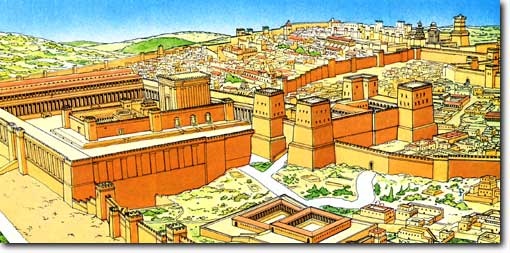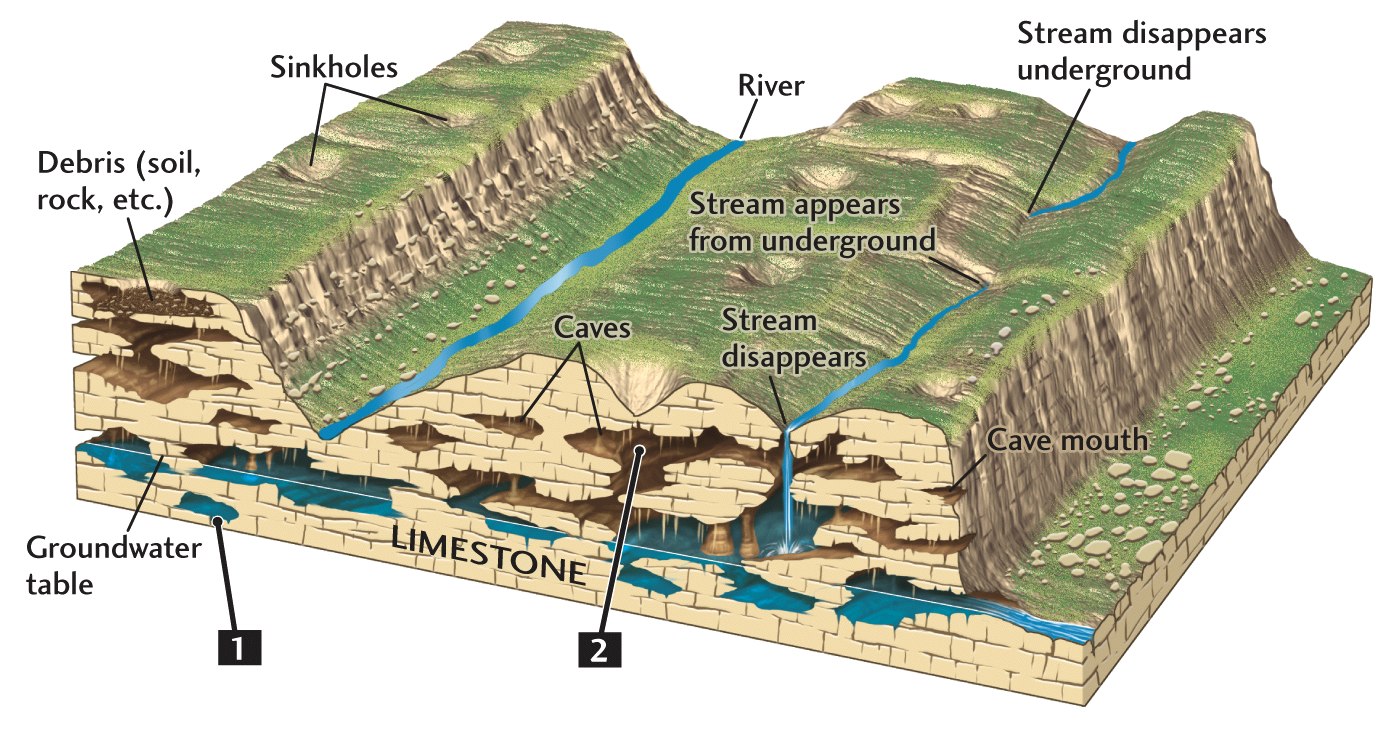Western Wall
The Western Wall, Wailing Wall or Kotel is an ancient limestone wall in the Old City of Jerusalem. It is a relatively small segment of a far longer ancient retaining wall, known also in its entirety as the "Western Wall". The wall was originally erected as part of the expansion of the Second Jewish Temple by Herod the Great, which resulted in the encasement of the natural, steep hill known to Jews and Christians as the Temple Mount, in a large rectangular structure topped by a huge flat platform, thus creating more space for the Temple itself and its auxiliary buildings.
The Western Wall is considered holy due to its connection to the Temple Mount. Because of the status quo policy, the Wall is the holiest place where Jews are permitted to pray, though it is not the holiest site in the Jewish faith, which lies behind it. The original, natural and irregular-shaped Temple Mount was gradually extended to allow for an ever larger Temple compound to be built at its top. This process was finalised by Herod the Great, who enclosed the Mount with an almost rectangular set of retaining walls, built to support extensive substructures and earth fills needed to give the natural hill a geometrically regular shape. On top of this box-like structure Herod built a vast paved esplanade which surrounded the Temple. Of the four retaining walls, the western one is considered to be closest to the former Temple, which makes it the most sacred site recognised by Judaism outside the former Temple Mount esplanade. Just over half the wall's total height, including its 17 courses located below street level, dates from the end of the Second Temple period, and is commonly believed to have been built around 19 BCE by Herod the Great, although recent excavations indicate that the work was not finished by the time Herod died in 4 BCE. The very large stone blocks of the lower courses are Herodian, the courses of medium-sized stones above them were added during the Umayyad era, while the small stones of the uppermost courses are of more recent date, especially from the Ottoman period.
The term Western Wall and its variations is mostly used in a narrow sense for the section traditionally used by Jews for prayer, and it has also been called the "Wailing Wall", referring to the practice of Jews weeping at the site over the destruction of the Temples. During the period of Christian Roman rule over Jerusalem (ca. 324–638), Jews were completely barred from Jerusalem except to attend Tisha be-Av, the day of national mourning for the Temples, and on this day the Jews would weep at their holy places. The term "Wailing Wall" was thus almost exclusively used by Christians, and was revived in the period of non-Jewish control between the establishment of British Rule in 1920 and the Six-Day War in 1967. The term "Wailing Wall" is not used by Jews and increasingly many others who consider it derogatory.
In a broader sense, the Western Wall can refer to the entire 488 meter-long retaining wall on the western side of the Temple Mount. The classic portion now faces a large plaza in the Jewish Quarter, near the southwestern corner of the Temple Mount, while the rest of the wall is concealed behind structures in the Muslim Quarter, with the small exception of a 25 ft (8 m) section, the so-called Little Western Wall. The segment of the Western retaining wall traditionally used for Jewish liturgy known as the "Western Wall" derives its particular importance to it having never been fully obscured by medieval buildings, and displaying much more of the original Herodian stonework than the "Little Western Wall". In religious terms, the "Little Western Wall" is presumed to be even closer to the Holy of Holies and thus to the "presence of God" (Shechina), and the underground Warren's Gate, which has been out of reach since the 12th century, even more so.
The wall has been a site for Jewish prayer and pilgrimage for centuries; the earliest source mentioning this specific site as a place of worship is from the 16th century. The previous sites used by Jews for mourning the destruction of the Temple, during periods when access to the city was prohibited to them, lay to the east, on the Mount of Olives and in the Kidron Valley below it. From the mid-19th century onwards, attempts to purchase rights to the wall and its immediate area were made by various Jews, but none was successful. With the rise of the Zionist movement in the early 20th century, the wall became a source of friction between the Jewish and Muslim communities, the latter being worried that the wall could be used to further Jewish claims to the Temple Mount and thus Jerusalem. During this period outbreaks of violence at the foot of the wall became commonplace, with a particularly deadly riot in 1929 in which 133 Jews were killed and 339 injured. After the 1948 Arab-Israeli War the Eastern portion of Jerusalem was occupied by Jordan. Under Jordanian control Jews were completely expelled from the Old City including the Jewish quarter, and Jews were barred from entering the Old City for 19 years, effectively banning Jewish prayer at the site of the Western Wall. This period ended on June 10, 1967, when Israel gained control of the site following the Six-Day War. Three days after establishing control over the Western Wall site the Moroccan Quarter was bulldozed by Israeli authorities to create space for what is now the Western Wall plaza.
 Drawing of the original temple
Drawing of the original temple
The Wall-Geology
The Wall is made of Jerusalem Stone.
Jerusalem stone is a name applied to various types of pale limestone, dolomite and dolomitic limestone, common in and around Jerusalem that have been used in building since ancient times. One of these limestones, meleke, has been used in many of the region's most celebrated structures, including the Western Wall.
Jerusalem stone continues to be used in construction and incorporated in Jewish ceremonial art such as menorahs and seder plates. In 2000, there were 650 stone-cutting enterprises run by Palestinians in the West Bank, producing a varied range of pink, sand, golden, and off-white bricks and tiles.
Limestone is a sedimentary rock composed largely of the minerals calcite and aragonite, which are different crystal forms of calcium carbonate (CaCO3). Most limestone is composed of skeletal fragments of marine organisms such as coral, forams and molluscs.
Limestone makes up about 10% of the total volume of all sedimentary rocks. The solubility of limestone in water and weak acid solutions leads to karst landscapes, in which water erodes the limestone over thousands to millions of years. Most cave systems are through limestone bedrock.
Limestone has numerous uses: as a building material, as aggregate for the base of roads, as white pigment or filler in products such as toothpaste or paints, and as a chemical feedstock for the production of lime.
The first geologist to distinguish limestone from dolomite was Belsazar Hacquet in 1778.
 Structure of a limestone
Structure of a limestone
 Development of limestone
Development of limestone 
Climate
The city is characterized by a hot-summer Mediterranean climat, with hot, dry summers, and mild, wet winters. Snow flurries usually occur once or twice a winter, although the city experiences heavy snowfall every three to four years, on average, with short-lived accumulation. January is the coldest month of the year, with an average temperature of 9.1 °C (48.4 °F); July and August are the hottest months, with an average temperature of 24.2 °C (75.6 °F), and the summer months are usually rainless. The average annual precipitation is around 550 mm (22 in), with rain occurring almost entirely between October and May. Snowfall is rare, and large snowfalls are even more rare. Jerusalem received over 30 centimetres (12 in) of snow on 13 December 2013, which nearly paralyzed the city. A day in Jerusalem has on average, 9.3 sunshine hours.
Most of the air pollution in Jerusalem comes from vehicular traffic. Many main streets in Jerusalem were not built to accommodate such a large volume of traffic, leading to traffic congestion and more carbon monoxide released into the air. Industrial pollution inside the city is sparse, but emissions from factories on the Israeli Mediterranean coast can travel eastward and settle over the city.

Taken from www.wikipedia.org
We please you to answer the following questions ( It doesn't matter if you can't answer all the questions):
1. The wall is made out of limestone but there are trees growing out off the wall. Under what geological or climatical conditions is that possible?
2. What are the geological "clints" and "grikes"?
3. Due to the material, as well as the geological and climatic conditions of the area, there are holes under the ground the wall was build on. Why is that?
4. If you like you can insert a photo